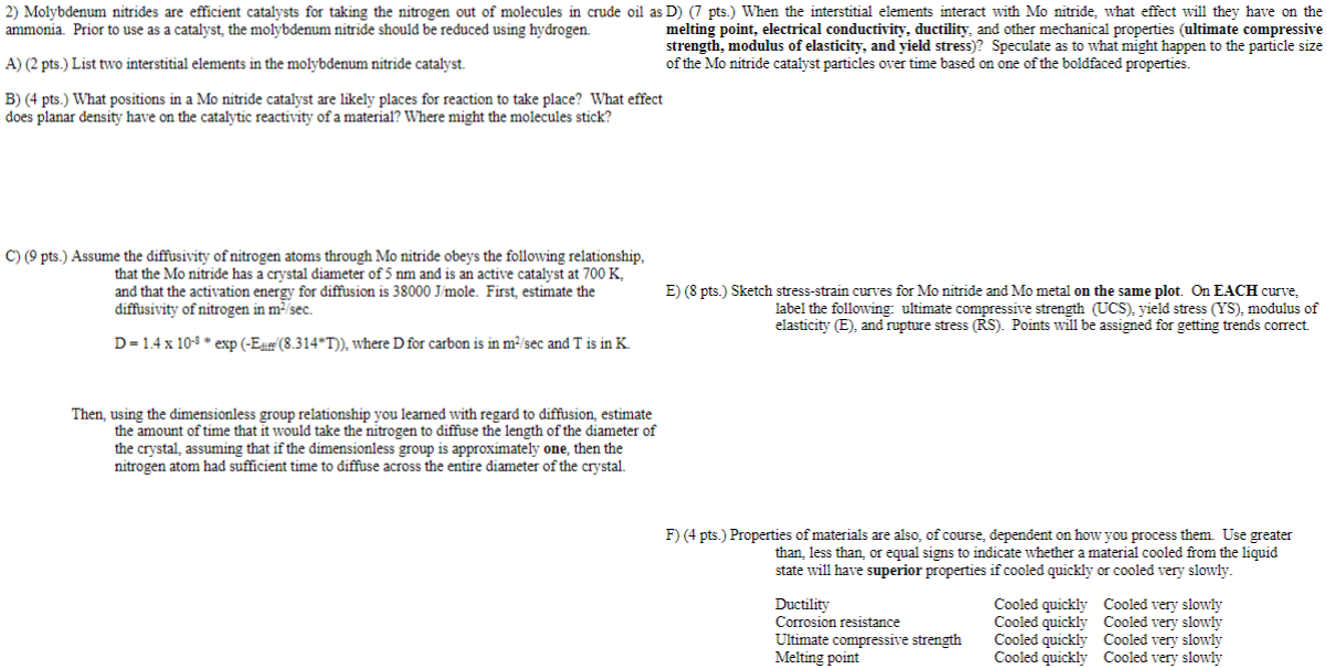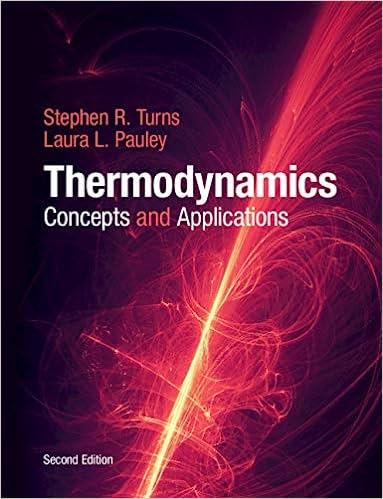Answered step by step
Verified Expert Solution
Question
1 Approved Answer
Please answer all parts of question 2 . Please include all steps and work for the answers including the correct calculations when needed or asked.
Please answer all parts of question Please include all steps and work for the answers including the correct calculations when needed or asked.
ammonia. Prior to use as a catalyst, the molybdenum nitride should be reduced using hydrogen.
A pts List two interstitial elements in the molybdenum nitride catalyst.
melting point, electrical conductivity, ductility, and other mechanical properties ultimate compressive
strength, modulus of elasticity, and yield stress Speculate as to what might happen to the particle size
of the Mo nitride catalyst particles over time based on one of the boldfaced properties.
B pts What positions in a Mo nitride catalyst are likely places for reaction to take place? What effect
does planar density have on the catalytic reactivity of a material? Where might the molecules stick?
C pts Assume the diffusivity of nitrogen atoms through Mo nitride obeys the following relationship,
that the Mo nitride has a crystal diameter of and is an active catalyst at
and that the activation energy for diffusion is ole. First, estimate the
diffusivity of nitrogen in
E pts Sketch stressstrain curves for Mo nitride and Mo metal on the same plot. On EACH curve,
exp where for carbon is in and is in
label the following: ultimate compressive strength UCS yield stress YS modulus of
elasticity E and rupture stress RS Points will be assigned for getting trends correct.
Then, using the dimensionless group relationship you learned with regard to diffusion, estimate
the amount of time that it would take the nitrogen to diffuse the length of the diameter of
the crystal, assuming that if the dimensionless group is approximately one, then the
nitrogen atom had sufficient time to diffuse across the entire diameter of the crystal.
F pts Properties of materials are also, of course, dependent on how you process them. Use greater
than, less than, or equal signs to indicate whether a material cooled from the liquid
state will have superior properties if cooled quickly or cooled very slowly.
Ductility
Corrosion resistance
Ulitimate compressive strength
Melting point
Cooled quickly Cooled very slowly
Cooled quickly Cooled very slowly
Cooled quickly Cooled very slowly
Cooled quickly Cooled very slowly

Step by Step Solution
There are 3 Steps involved in it
Step: 1

Get Instant Access to Expert-Tailored Solutions
See step-by-step solutions with expert insights and AI powered tools for academic success
Step: 2

Step: 3

Ace Your Homework with AI
Get the answers you need in no time with our AI-driven, step-by-step assistance
Get Started


